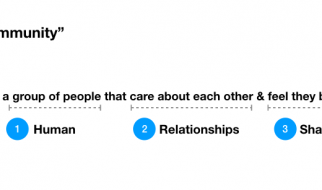By Tyler Pike
To kick things off, I?m a bit of a frisbee nerd. I?ve played Ultimate Frisbee for a three and a half years and I?m currently a captain for Smokejump (University of Montana?s men?s team), also in 2017 I played for the Mental Toss Flycoons (Missoula?s mixed club team). For the past five years I?ve also dabbled in disc golf, playing in amature divisions in tournaments around the state. I?m definitely not at a professional level in either of these sports, but I?ve been around them long enough to get an understanding of the culture.
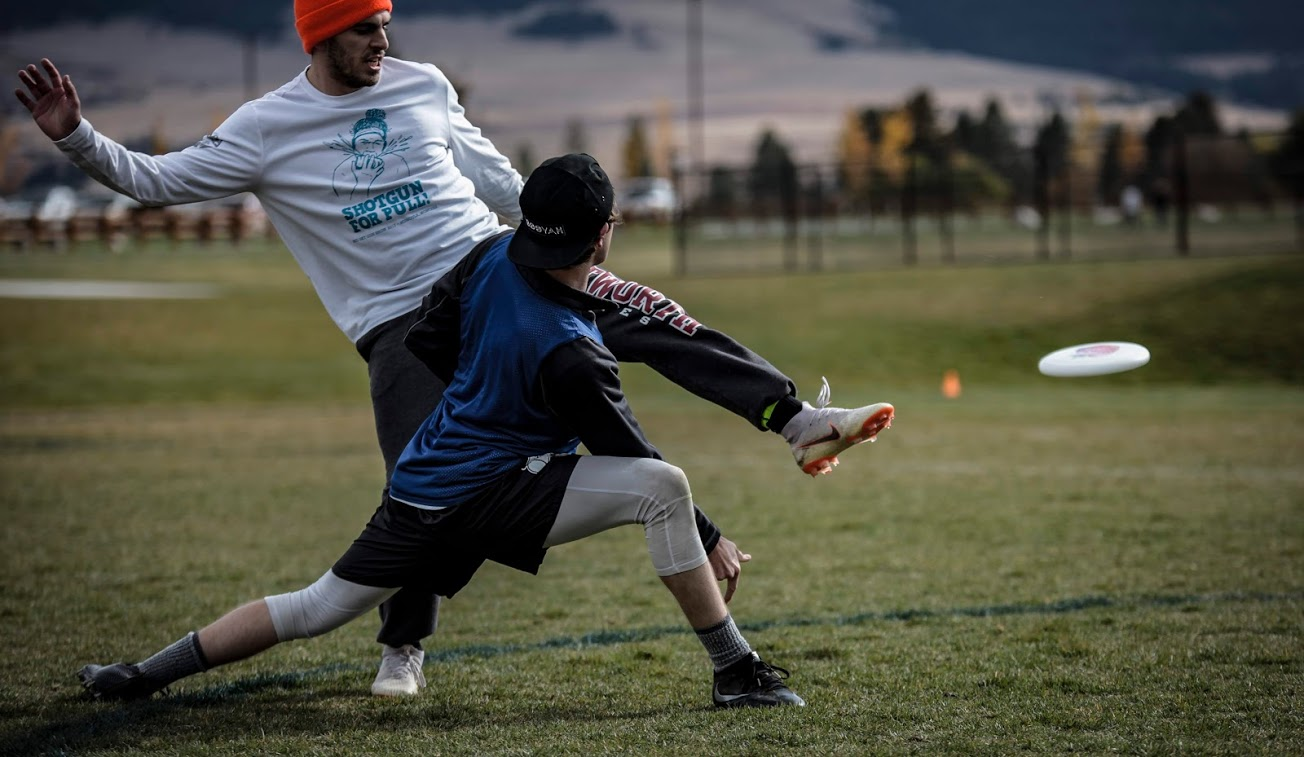 I wear tights when I play Ultimate, so you know I?m serious about it. Photo credit to Sara Diggins!
I wear tights when I play Ultimate, so you know I?m serious about it. Photo credit to Sara Diggins!
As a marketing student and a frisbee nerd, I?ve been fascinated trying to apply my business education to the frisbee world. In this article I want to provide a quick history of how disc golf came to be, briefly touch on how disc golf companies have approached marketing in the past, what disc golf companies are currently doing, and where I think marketing in the disc golf industry will look like in the future.
If you?re not sure what disc golf is, here is a description from the Professional Disc Golf Association (PDGA):
Disc golf is played much like traditional golf. Instead of a ball and clubs, however, players use a flying disc or Frisbee. The sport was formalized in the 1970?s and shares with ?ball golf? the object of completing each hole in the fewest strokes (or, in the case of disc golf, fewest throws). A golf disc is thrown from a tee area to a target which is the ?hole?.
The Past
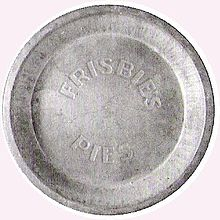
The term ?Frisbee? originated from the Frisbie Pie Company in 1871. William Russell Frisbie founded his bakery in Bridgeport, Connecticut. Frisbie Pie employees used to play catch with pie tins on their breaks, school children would play with the pie tins and yell ?Frisbie? to alert those nearby of the pie tins flying by heads, and eventually Yale students wound up playing with the Frisbie tins in New Haven Green Park.
Even though Frisbie tins were being used as toys for decades at this point, no one had made a disc intended for recreation purposes. On Thanksgiving day of 1937, Fred Morrison wound up tossing a popcorn tin lid with his girlfriend after dinner and they both thought it was fun. After a few more weeks of tossing the lid, the lid had warped and the edges were sharp so Morison ?borrowed? a cake pan from his mother. Morrison and his girlfriend were tossing the cake pan on a beach in Los Angeles when a beachgoer offered to buy the cake pan for twenty-five cents. Morrison sold the cake pan, and realized that cake pans only cost five cents, so there was money to be made selling ?flying cake pans?.
Morrison and his father started brainstorming how to make a ?better flying cake pan? but World War II came along and Morrison enlisted in the Army Air Core. It wasn?t until 1946, but Morrison designed ?Whirlo-Way?, which was his first flying disc design. He shared the design drawing with his boss at the time, Warren Franscioni, who became interested in producing a better flying design. The duo decided to manufacture the Whirlo-Way design, but decided to use the newly developed plastic injection process instead of metal. Morrison and Franscioni made a business and called it PIPCO. In 1948, PIPCO started producing the first colorful plastic discs! The company re-tooled the disc mold to say ?Flyin-Saucer? rather than Whirlo-Way as an attempt to gain traction through publicity. PIPCO changed the disc?s name due to the recent Roswell incident occurring only a year earlier, and at the time there were many U.F.O reports making newspaper headlines. Unfortunately even with a trendy name the ?Flyin-Saucer?, the discs did not sell. PIPCO tried to get the discs into stores or wholesale, but had no luck. By February of 1950, Morrison gave up his ownership in PIPCO to Franscioni.
By 1954, Morrison wanted to sell Flyin-Saucers again, but didn?t want to use the same name or disc. In 1955, he designed a new disc called it the Pluto Platter in an attempt to ride the trend of the space race. Morrison sold the discs at fairs and this time found success in sales and caught the attention of the head of Wham-O, a company that was looking to get into the toy market. By 1957, Morrison made a deal with Wham-O that gave the company total control over manufacturing and sales promotion of the Pluto Platter.

Additionally in 1957, Wham-O renamed the Pluto Platter to ?Frisbee? because the head of the company read a Sports Illustrated article about flying discs that described Princeton students ignoring the name Pluto Platter and substituted the name with Frisbee. In 1964, Wham-O hired Ed Headrick and his first task was to increase sales of the disc. Headrick redesigned the disc by adding more weight to the rim and stepped away from the outer-space look and shifted towards more of a sport disc. Headrick is credited for designing the first ever modern sport disc.
Headrick is the father of disc golf because he designed the patents for the modern disc and for the modern disc golf target, he installed the first official disc golf course in Pasadena, California and then founded the first disc golf specific company in 1975 called the Disc Golf Association. In 1976, he founded the governing body of disc golf, the Professional Disc Golf Association (PDGA).
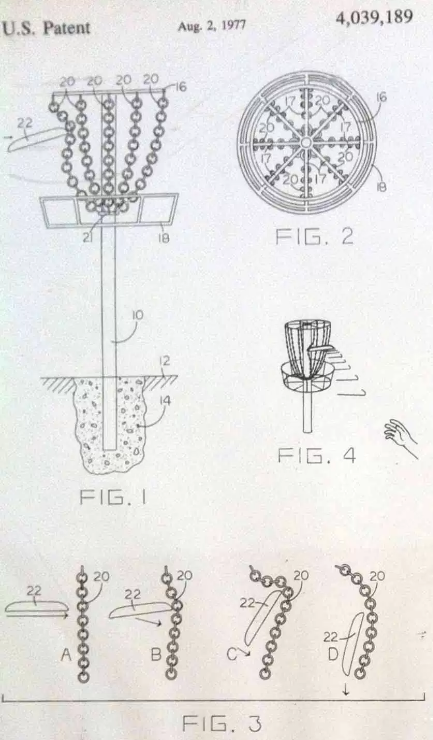
Headrick continued advancing disc golf by traveling the country signing players up for PDGA, selling discs, installing courses, and running events. In 1979 Headrick ran a tournament which he named $50,000 Disc Golf Tournament which was the first tournament with a payout pool that large and it also was the first event which required participants to qualify to enter the event.
How does this all relate to marketing again? Great question, the moral of the story is that disc golf is relatively new compared to the big four (NFL, MLB, NHL, NBA) and that grassroots efforts and learning how to operate with constraints are the reasons why disc golf exists, not major funding. I now want to start want to move a couple years into the future and explain where disc golf companies have focused their marketing efforts.
A little bit of the past and now
Sponsored players
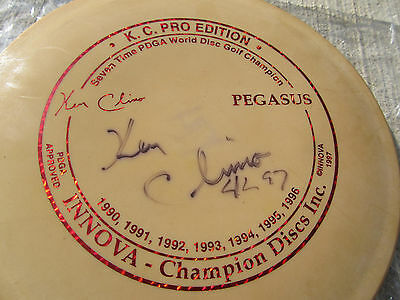
Like every other sport, companies want to sponsor players to promote their equipment. I can?t find who the first sponsored disc golf player was, but a sponsored player that changed disc golf forever was Ken Climo. Climo is the most dominant player of all time and holds twelve world championships. He signed a contract with Innova in the early 90s, and to my knowledge was the first player that provided any form of social proof for a disc golf company.
I believe Climo was the first player to ever have his name and signature featured on mass produced discs. Climo was definitely an outlier in the disc golf world for a long time, probably being the only man making a living by playing disc golf for years.
The most notable sponsored disc golfer currently is Paul McBeth, who recently signed a contract with Discraft that was confirmed to be a four-year contract, and rumored to have a one million dollar guarantee. It looks like Discraft and McBeth are mimicking what Nike did with the Jordan brand. Discraft and McBeth are currently in the process of making a ?McBeth? line of discs within Discraft.
Sorry for the blurry video, Paul Mcbeth is an absolute unit of a disc golfer though.
In 2019, disc golf companies have decided it?s worth it to support more than one player. There are tons of sponsored players but not all of them have the same level of sponsorship. Tons of touring pros travel to tournaments across the country which help companies showcase their equipment, but even Paul McBeth claimed there are currently ?too many sponsored players?. As a seasoned disc golfer, I agree with McBeth. Outside of the elite players and a few sponsored pros in Montana, I feel like there has been a saturation of sponsored players and I pay about as much attention to them as I would an online banner ad.
The most underrated marketing I?ve seen in disc golf comes from sponsoring disc golf ambassadors. An ambassador might not be a top level player, but they?re the type of person that helps run the local disc golf club or runs tournaments in the area. Long story short, they?re local players that have supported the growth of the sport. This provides great word of mouth marketing opportunities for disc golf companies.
As a personal example, when I first started playing I bumped into a brand ambassador for Innova and he helped teach me what discs to use for a certain shots. Rather than saying ?Hey you need any overstable driver that is going to quickly move left and fall out of the air? he said ?hey this is a Firebird shot?. I now knew what a Firebird was and when to use it.
There?s been plenty of times where I?ve told my friends ?hey this is an insert disc name here shot?. Innova has a huge advantage in word of mouth marketing in the Missoula area because they?ve been around for so long, have produced tons of desirable discs, and have sponsored the Missoula disc tastemakers. From my personal disc golf experience, local players like to support companies that sponsor our local players. So for Missoula we root for Innova but in Michigan they probably root for Discraft or MVP, word of mouth will always be king.
Higher quality plastics
There is a ridiculous amount of science that goes into designing a disc. Over the years, disc companies have been popping up and making a name for themselves based on their blends of plastic. Overall, the plastics discs are made out of have become more durable and have improved grip. Disc designers have even figured out a way to get air bubbles into the rims of discs. Almost all disc golf companies have comparable styles of plastics in their lineups.
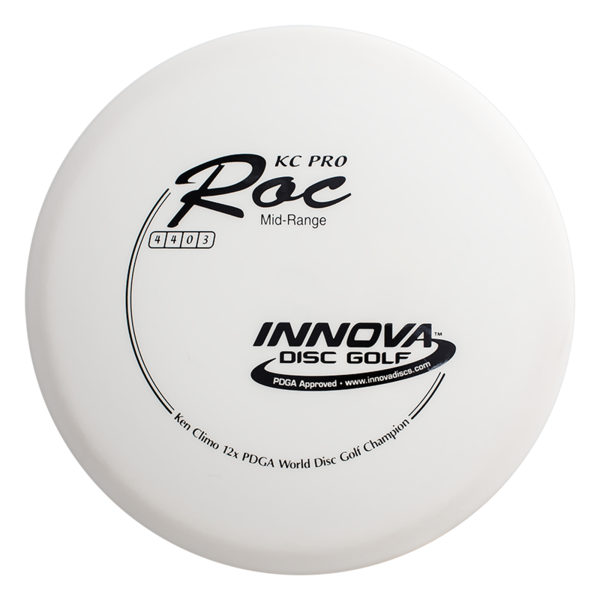
One of the biggest plastic innovations in disc golf history (in my opinion) came from when Innova had Ken Climo (an Innova sponsored player and the most dominant disc golfer of all time) team up with their design team to make a special blend of plastic. Innova wound up naming the plastic KC Pro and it?s still one of the most popular plastics on the market.
A more recent innovation in plastic design came from Maple Valley Plastics (MVP). MVP designs all its discs with overmold technology and claims that the overmold helps with the high speed stability in a disc?s flight.
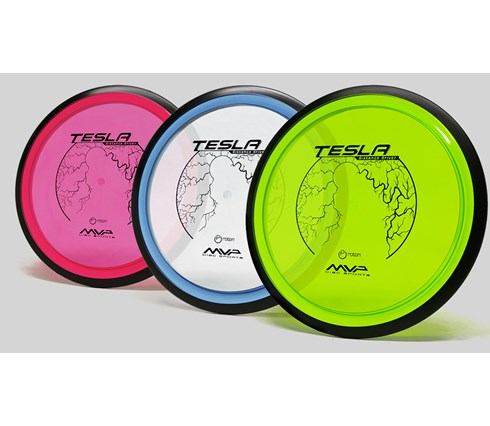
What that means for normal people, is that each MVP disc has more weight in the rim compared to normal discs. The overmold design also provides a relatively unique looking design too.
More molds
Disc companies have produced so many types of discs, it?s hard to keep up. Right now I think Innova alone manufactures at least 100 different molds. Innova has been around for a long time, so not every company has that many different discs, but a company like Dynamic Discs also has more than 100 molds. There are plenty of options for any level of player to choose from!
A little bit of right now, but mostly the future of Disc Golf
The media
Disc golf tournament coverage almost exclusively lives online. Youtube currently is the place to go for disc golf coverage! These companies pretty much survive on merch sales, Patreon subscribers, Youtube Adsense, sponsorships from disc manufacturers, and advertisements from disc manufacturers. Occasionally a fantastic shot (like the one below) will make an ESPN Top 10 highlight reel but other than the rare highlight, disc golf remains online.
An albatross is one of the rarest scores in golf
JomezPro (111k subscribers) and Central Coast Disc Golf (68k subscribers) are the two most popular disc golf media companies and post content on their respective Youtube channels. Both crews travel to tournaments, film, and provide post-event edited coverage. Usually Jomez and Central Coast will break a full 18-hole round into a ?Front Nine? video and a ?Back Nine? video. It usually takes somewhere between 25?33 minutes to watch nine holes of edited coverage.
To my knowledge SmashBoxxTV (25k subscribers) is the only company in disc golf media that attempts to provide live disc golf coverage. Not to diminish the work they do, but live streams today usually lag, the video is pixelated, and it?s boring to watch golfers walk to their shots.
For the next five years I believe that non-live edited coverage on Youtube will remain the popular viewing method. The quality of live disc golf coverage remains less than desirable and have previously used Facebook Live as the method of distribution, which did not go well. Even with 5g networks in the near future, I don?t think that?s going to be enough to change viewer habits. The post-production quality from JomezPro and Central Coast set the standards for disc golf viewership by producing HD 1080p60 videos, follow flights on throws, and color commentary from professional disc golfers.
Some disc golf highlights of 2018. JomezPro has solidified the post-production standard in disc golf
In 10 years I could see live coverage finally overtaking post production coverage. There?s a lot of potential in augmented reality and production teams are already making it shine in large sports productions like the NFL. Once augmented reality becomes easier to use, more accessible and affordable I think we?ll see more of it in disc golf. One of the most popular features in post-production disc golf videos is the ?follow flight? of discs, but I imagine once augmented reality can be made done in real time we?ll be able to see predicted flight paths from golfers before they even throw.
Disc Quality
Disc golf manufacturers will always be trying to make the next best plastic and the next best mold. I?m not sure if companies will ever be able to make better types of plastic or molds when there?s already so many, but I think companies need to change from quantity to quality and approach the manufacturing process in a more scientific manner. Innova has recently received criticism for having an inconsistent manufacturing process. What does inconsistent manufacturing mean for a disc golf company? It means that the same mold of disc can fly wildly different based on a few variables that come into play during the manufacturing process. Paying for something and not receiving the expected result is a frustrating experience as a consumer. But especially from a sports marketing position, we?ve seen what happens when a product fails to do its job, just look at lashback Nike received when Zion blew out his shoe. No athlete at any level wants to play with inferior equipment.
In three years I think disc golf manufacturing is going to be similar to how it is now, if not worse. Discmania just signed a new manufacturing agreement with Yikun, Innova, and Latitude64. Previously all of Discmania?s discs were made in the U.S. by Innova, but now Discmania is preparing to expand to new markets in China with cheaper discs (Yikun is a Chinese company) while also trying to raise profit margins by creating more premium plastics with Latitude64.
An agreement between four companies isn?t the entire industry and similar deals have been made before, but I think disc manufacturing companies are about to get into something that they can?t scale without sacrificing quality.
In five years I see a recession killing off a lot of smaller disc companies that have new technology (like bluetooth connected discs) but aren?t already popular and maybe taking out one of the larger disc manufacturers. Afterwards a company like Innova or Discraft will likely purchase the patents of the smaller companies that don?t survive.
In ten years I bet there will be a smaller disc manufacturers that will focus on lower production output with high manufacturing consistency and will target serious disc golfers, not casual players. With that said I think Discraft, Discmania, and Latitude64 will overtake Innova as being the dominant disc golf manufacturer.
App Technology
Right now UDisc is the dominant disc golf app. It started life simply as a scorecard, but has quickly evolved into a much larger tool. It allows you to keep score, see local leaderboards, see live tournament scores, measure your throws, track your stats, and it also has course maps. It also became the official app of the PDGA this past October.
Within three years, I see UDisc start trying to apply augmented reality and add a ?caddy? feature. There?s already an app that?s trying to do this for traditional golf, but I imagine that Udisc starts experimenting with similar features.
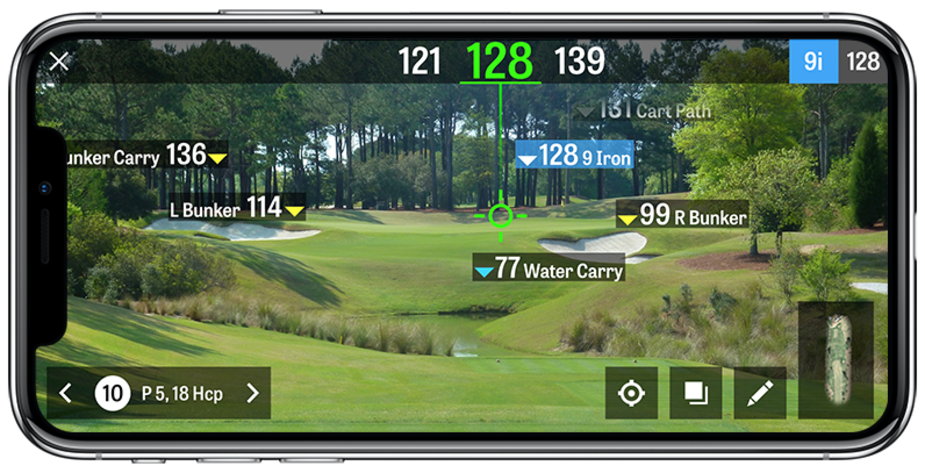
Demographics
Disc golf also happens to be growing at a rapid pace! In 2008 the PDGA has 12,980 members and in 2018 it had 46,45. It literally grew 3.5 times larger in a decade. Right now I think disc golf is in a lowkey crisis. Out of the 46,457 active members in the PDGA only 3,619 of those members are women, if you do the math ladies only make up 8% of the PDGA. Now this number isn?t totally telling as I?m sure there are plenty of women who disc golf but lack an active PDGA membership.
Not only is there a lack of ladies in the PDGA, but even comparing the viewership between the the men?s and women?s fields is discouraging. The first nine holes of the first round of the 2018 World Championship for the pro men?s field has 132,770 views. The first nine holes of the first round of the 2018 World Championship for the pro women?s field has 41,127 views. That?s a difference of 91,643 views. Yikes!
This might be a hot take, but right now I think a lot of the issues involving viewership of professional women?s disc golf comes from the current talent pool. Looking at the PDGA?s list of top men and top women in the world is pretty telling. There?s literally twice as many men who qualified to make the ?top? list and all of them have a higher ranking than the best women?s disc golfer in the world. The lowest ranked man on the list is 1000 rated and the lowest ranked woman is 920 rated.
To give some brief context, as a weekend warrior who doesn?t really practice disc golf consistently a plays once every other week I?m about 920 rated.
On a positive note, there are disc golf programs starting up in local parks and rec departments, there are disc golf courses being built at elementary schools, and disc golf as a whole seems to be getting more accessible. The PDGA also made it a goal to increasing women?s participation in organized disc golf events. In the near future with increased support, coaching, and more women being exposed to disc golf at an early age I think we?re going to see an increase in professional women?s viewership.
I bet the women?s scene in disc golf will look the same for about three years, but in five years I think we?re going to see a much deeper and talented ladies pool. I believe that Dynamic Discs? Cynthia Ricciotti is going to take the Women?s Division by storm. The gal is only like 15, but she absolutely crushes discs and has already won the Women?s Junior National Championship.
Course Development
Right now the PDGA estimates a new course costing about $20,000 to install and that doesn?t include the price of land. From my personal experiences, most disc golf courses are usually free to play and are found in either city or national parks. I?ve played private courses and there?s usually a green fee, but I don?t think I?ve ever payed more than $10 to play a round on private property. Private courses in my experience usually provide course upkeep, and and the price of entry keeps more casual players out which helps reduce the time it takes to play a round.
Even though there are tons of passionate disc golfers who would love to build a course, according to the PDGA only 8% of disc golfers make more than $150,000 a year. I imagine that that 8% group of disc golfers would be the most likely to be able to afford land to start a course, but I don?t know if running a disc golf course can be profitable yet. Most private courses tend to be ski resorts who set up temporary courses in the summer, passionate disc golfers that own land and built a course there, or golf courses setting up temporary courses in the winter. Very seldom have I seen private ?disc golf only? courses that aren?t multiuse.
In the next three years I can see more ski resorts or golf courses open temporary disc golf courses in their offseasons, but where I really see the future of disc golf is in local governments. Over the next five years I think disc golfers will be overrunning their Parks and Recreation departments to get new courses in the area. It?s a symbiotic relationship because Parks and Rec people get numbers in parks and disc golfers get new disc golf courses!
In ten years if disc golf continues to grow at the rate it currently is, I bet we?ll see an increase in private courses. I doubt disc golf will ever be able to see a plethora of private courses like traditional golf, but I think that?s okay. Right now I think there?s only one true ?disc golf only? course in the nation, and within ten years I bet we can see two more pop up and survive, but not many more than that.

